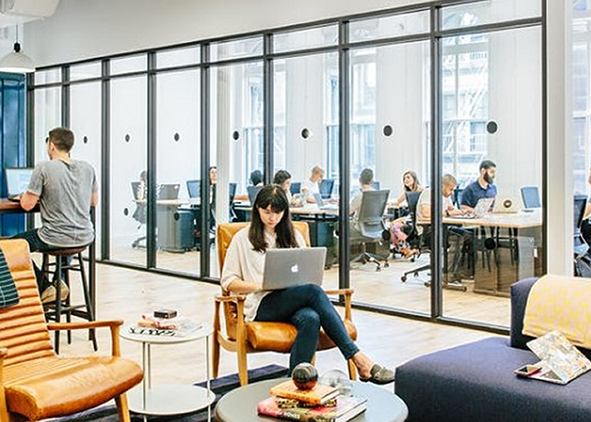An example of coworking and smart living in Milan
DOI:
https://doi.org/10.19229/2464-9309/4172018Keywords:
coworking, management, integrated design, flexibility, comfortAbstract
The article focuses on the modern formats of working space use deriving from the sharing economy. The short rent, created mainly to cope with residential needs, has in fact recently seen the development of increasingly growing demand for shared and temporary work spaces. A brief description of the developments of the last century introduces the analysis aimed at investigating the characteristics of the main temporary use methods. Also illustrates the example of smart living design Eco System Temporary House.
Downloads
Article Metrics Graph
References
Barone G., Petrucci, A. and Primo, L. (1976), Non leggere – Biblioteche e pubblica lettura in Italia dal 1861 ai nostri giorni, Mazzotta, Milano.
Bonifazio, P. and Scrivano, P. (2001), Olivetti costruisce – Architettura moderna a Ivrea – Guida al museo a cielo aperto, Edizioni Skira, Milano.
CABE, Commission for Architecture and Built Environment (2000), By design – Urban design in the planning system – Towards better practice, The Copyright Unit, Norwich, UK.
Ciaramella, A. and Bellintani, S. (2015), Spazio ufficio, programmare progettare e gestire l’ufficio contemporaneo, Maggioli, Sant’Angelo di Romagna.
Comune di Milano (2018), Elenco qualificato makerspace/fablab del Comune di Milano, aggiornamento al 30 luglio 2018, Direzione Economia Urbana e Lavoro Direzione di Progetto Innovazione Economica e Sostegno all’Impresa. [Online] Available at: www.lavoroeformazioneincomune.it/coworking-2/ [Accessed October 18th 2018].
Comune di Milano (2018), Elenco qualificato spazi coworking del Comune di Milano, aggiornamento al 30 luglio 2018, Direzione Economia Urbana e Lavoro Direzione di Progetto Innovazione Economica e Sostegno all’Impresa. [Online] Available at: www.lavoroeformazioneincomune.it/coworking-2/ [Accessed October 18th 2018].
Copenaghen Institute for Future Studies (2013), ISS 2020 vision – New ways working, the workplace of the future, Copenaghen. [Online] Available at: www.publications.issworld.com/ISS/External/issworld/White _papers/2020_New_Ways_of_Working/?page=1 [Accessed October 18th 2018].
Eupolis Lombardia (2016), Le strutture ricettive in Lombardia, ottobre. [Online] Available at: www.polis.lombardia.it [Accessed October 18th 2018].
Fieldman, M. (2012), “The latest infographics: mobile business statistics for 2012”, in Forbes. [Online] Available at: www.forbes.com/sites/markfidelman/2012/05/02/the-latest-infographics-mobile-business -statistics-for-2012/ [Accessed October 18th 2018].
Halldis (2017), Osservatorio sugli Affitti a Breve Termine in Italia, primo semestre 2017. [Online] Available at: www.aspesi-associazione.it/public/files/2017/osservatorio_halldis_report.pdf [Accessed October 18th 2018].
Herman Miller (2013), Workplace Trends, US. [Online] Available at: www.hermanmiller.com/ content/dam/hermanmiller/documents/research_topics/2013_Workplace_Trends.pdf [Accessed October 16 th 2018].
McKinsey Global Institute (2011), Urban world: Mapping the economic power of cities. [Online] Available at: www.mckinsey.com/featured-insights/urbanization/urban-world-mapping-the-economic-power-of-cities [Accessed October 18th 2018].
Miller, R., Casey, M. and Konchar, M. (2014), Change your Space, Change your Culture – How Engaging Workspaces – Lead to Transformation and Growth, John Wiley & Sons, Hoboken.
Tagliaro, C. and Ciaramella, A. (2016), “Experiencing smart working: a case study on workplace change management in Italy”, in Journal of Corporate Real Estate, vol. 18, issue 3, pp. 194-208.
Schiaffonati, F. (1990), “Architettura e nuove tecnologie”, in Tronconi, O. (ed.), L’edificio intelligente, Etas Libri, Milano, pp. 4-40.

Downloads
Published
How to Cite
Issue
Section
License
This Journal is published under Creative Commons Attribution Licence 4.0 (CC-BY).
License scheme | Legal code
This License allows anyone to:
Share: copy and redistribute the material in any medium or format.
Adapt: remix, transform, and build upon the material for any purpose, even commercially.
Under the following terms
Attribution: Users must give appropriate credit, provide a link to the license, and indicate if changes were made; users may do so in any reasonable manner, but not in any way that suggests the licensor endorses them or their use.
No additional restrictions: Users may not apply legal terms or technological measures that legally restrict others from doing anything the license permits.
Notices
Users do not have to comply with the license for elements of the material in the public domain or where your use is permitted by an applicable exception or limitation.
No warranties are given. The license may not give users all of the permissions necessary for their intended use. For example, other rights such as publicity, privacy, or moral rights may limit how you use the material.


















































































